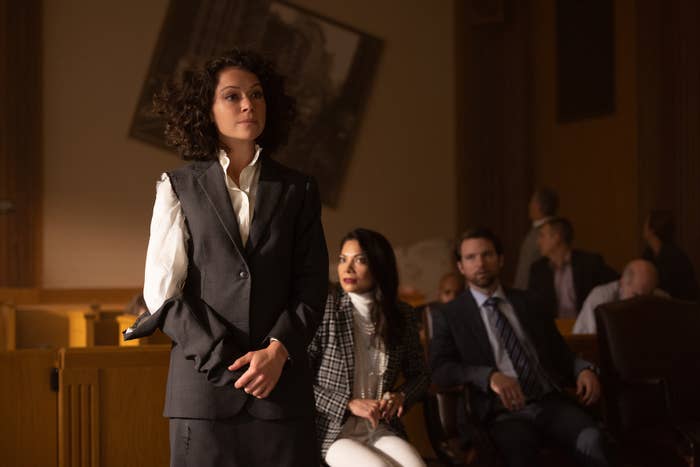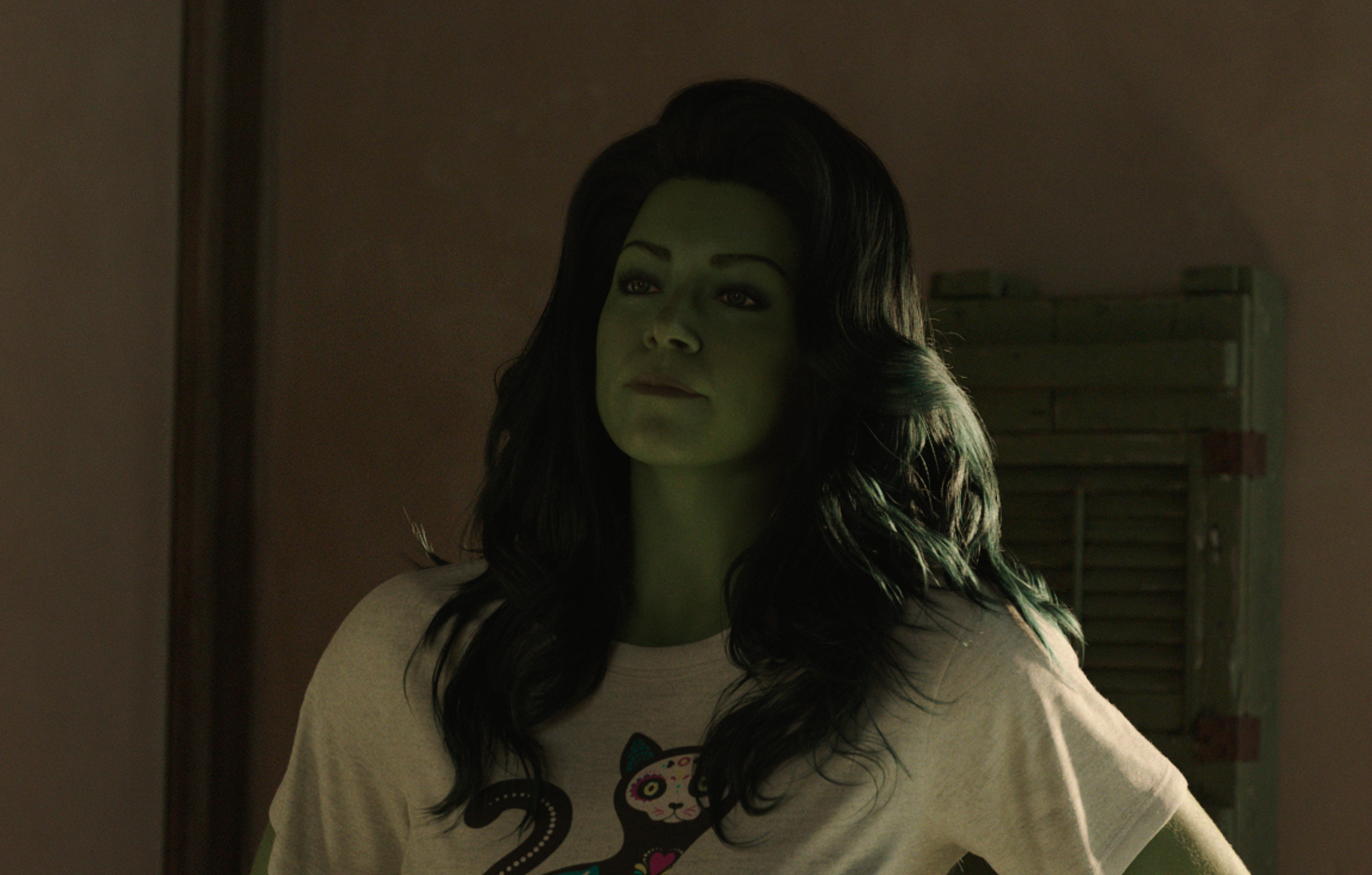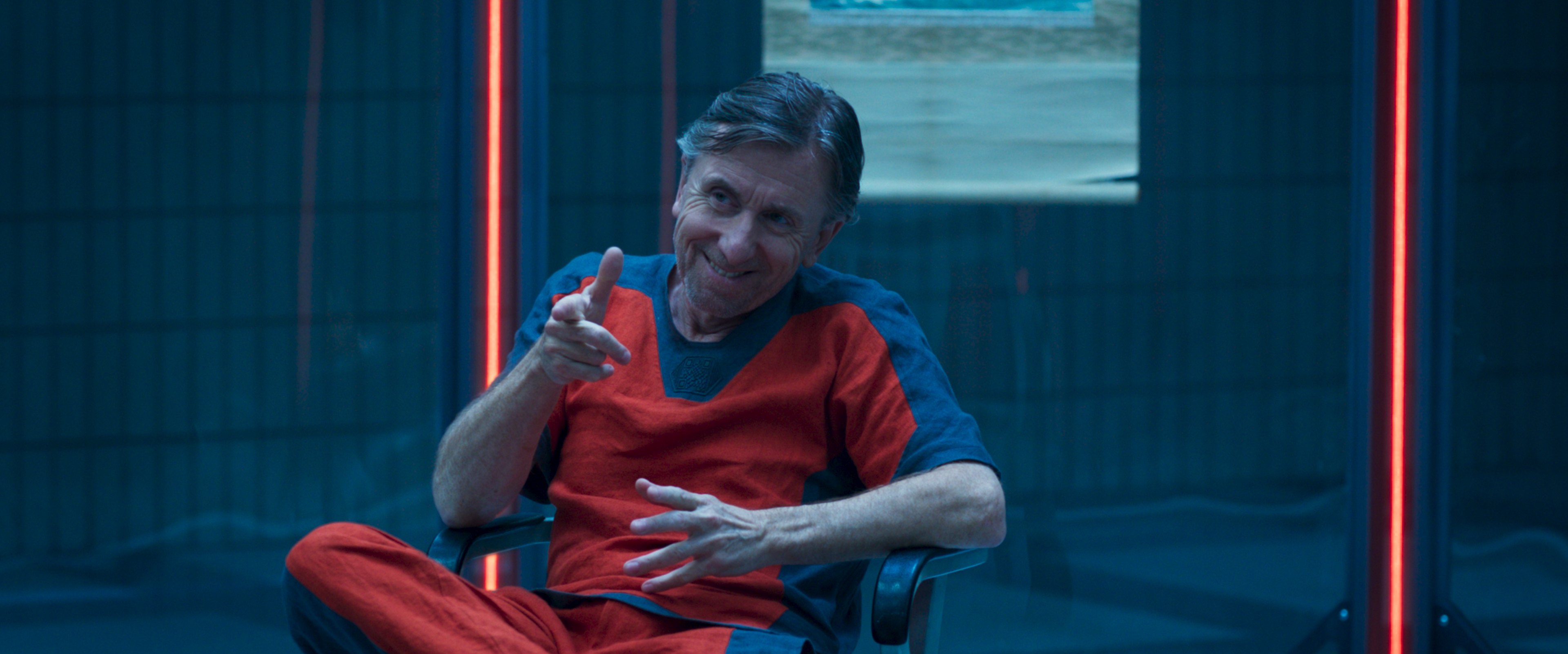
If you were to distill the MCU’s Phase 4 down to one theme, it’d be identity. So much of this post-Endgame reality is about old characters grappling with loss in the wake of a massive tragedy or new faces figuring out how to define themselves as they set out on a new path. So much of the MCU’s Disney+ output—WandaVision, The Falcon and the Winter Soldier, Hawkeye, and Ms. Marvel—fall into the latter half. The latest series, She-Hulk: Attorney at Law, follows suit, although its approach to accomplishing this Phase 4 goal is meant to carve out an inherently unique identity for itself as a 30-minute legal comedy in the style of Ally McBeal.
Created by Jessica Gao (the writer behind another famous green character: the “Pickle Rick” episode of Rick and Morty), She-Hulk sticks to the origins of her comic book counterpart. While traveling with her cousin, Bruce Banner (Mark Ruffalo), Jennifer Walters (Tatiana Maslany) gets into a car accident. In the resulting chaos, the two end up injured, and as Jen drags Bruce away from the wreckage, blood from Bruce’s wounds intermeshes with Jen’s open cuts. The resulting transfusion causes Jen to hulk out—but before she can cause any significant damage, Bruce snags her and begins to mentor her accordingly.
The training is for naught; when you’re repeatedly catcalled on the street or spoken down to at a meeting by a demeaning man, you learn to effectively regulate your anger. Jen thusly returns to Los Angeles to continue her legal career, but her life is only so normal when she’s a Hulk. Before long, she’s heading up a superhero law division at a glitzy firm—but not as Jennifer Walters. Instead, the firm wants the newly named “She-Hulk” to be the literal face of the practice.


She-Hulk is less consistent in its humor. I found some of the jokes to be hit or miss and often not nearly as clever as the series believes them to be. Many of those revolve around the show’s fourth-wall-breaking moments, inspired by writer/artist John Byrne’s and Dan Slott/Juan Bobillo’s respective tenures on the She-Hulk comics. Fairly or unfairly, they’ll draw comparisons to Fleabag (a touchpoint directly invoked by the series’ creators), which is perhaps one of the best series to leverage that trope. Sadly, She-Hulk isn’t nearly as successful in executing its fourth-wall moments as that once-in-a-generation kind of show. Additionally, many of these beats are done in self-reflection of the show’s various cameos (more on those in a second) and end up ringing particularly hollow. It’s one thing to throw stones at a glass house, but She-Hulk’s attempt ends up feeling like a bouncy ball in a Vanderbilt mansion. Satirizing guest appearances on a Marvel show when they’re the very people that turned cameo reporting/speculation into a cottage industry feels a bit like trying to have their cake and eat it, too—and lands like a lead balloon accordingly.
I also can’t talk about She-Hulk without mentioning the CGI elephant in the room, which arrives on the heels of several explosive reports about Marvel’s poor treatment of VFX workers. Based on the VFX quality of the series, which fluctuates wildly from moment to moment, it does not appear the artists working on She-Hulk were given the time to render the character realistically. The issue is most apparent in the series premiere, initially intended to be the eighth episode of the season. As a result, the effects feel rushed, and you’ll likely be able to tell. While Gao, Maslany, and director Kat Coiro spoke in solidarity with the workers a few weeks ago, it’s high time for Marvel to give these workers the time and money needed to make these effects effective.



